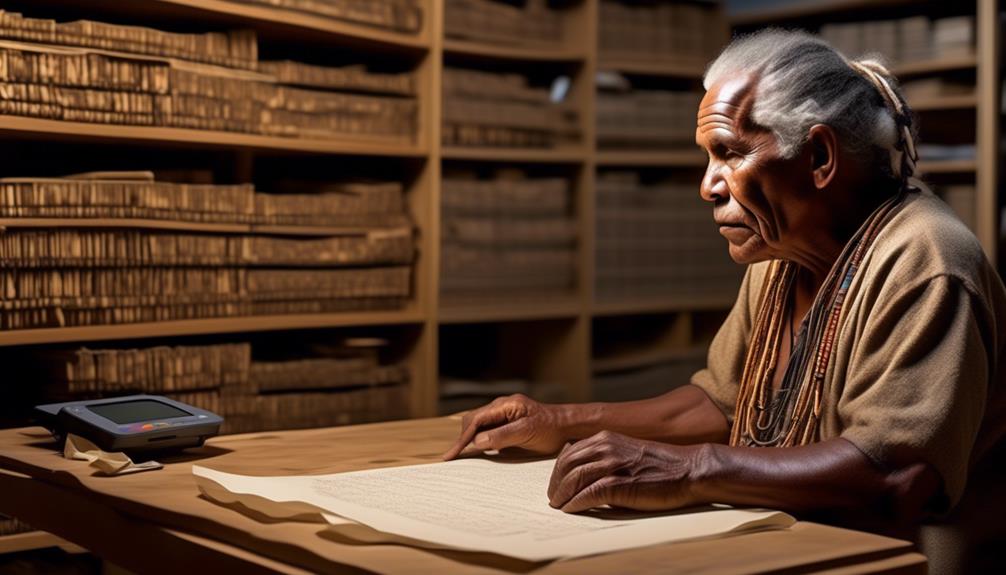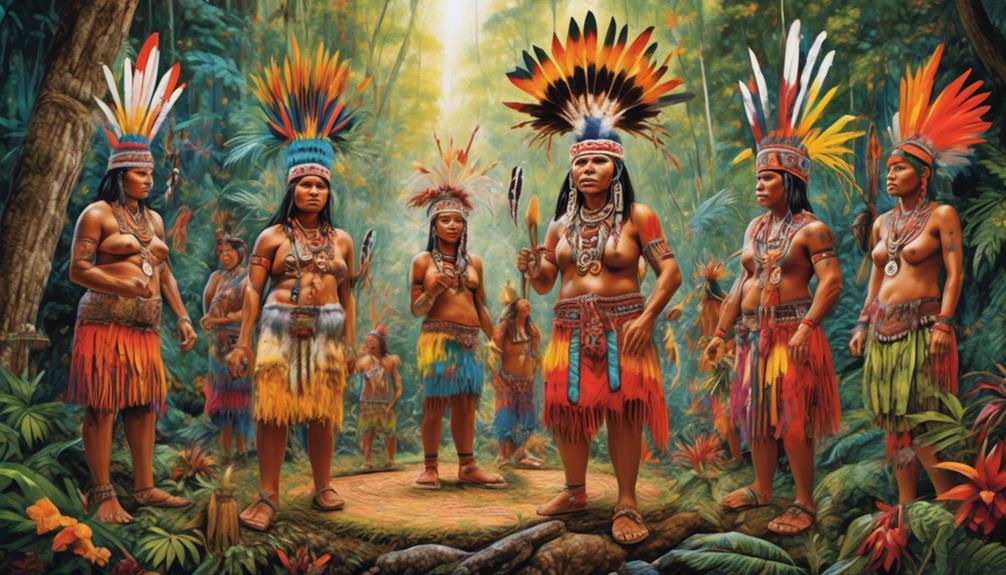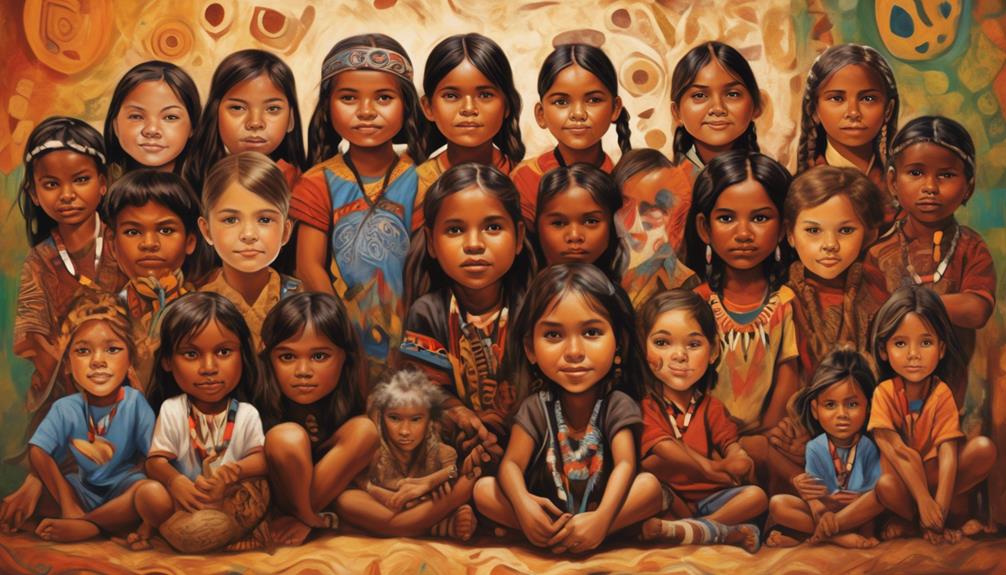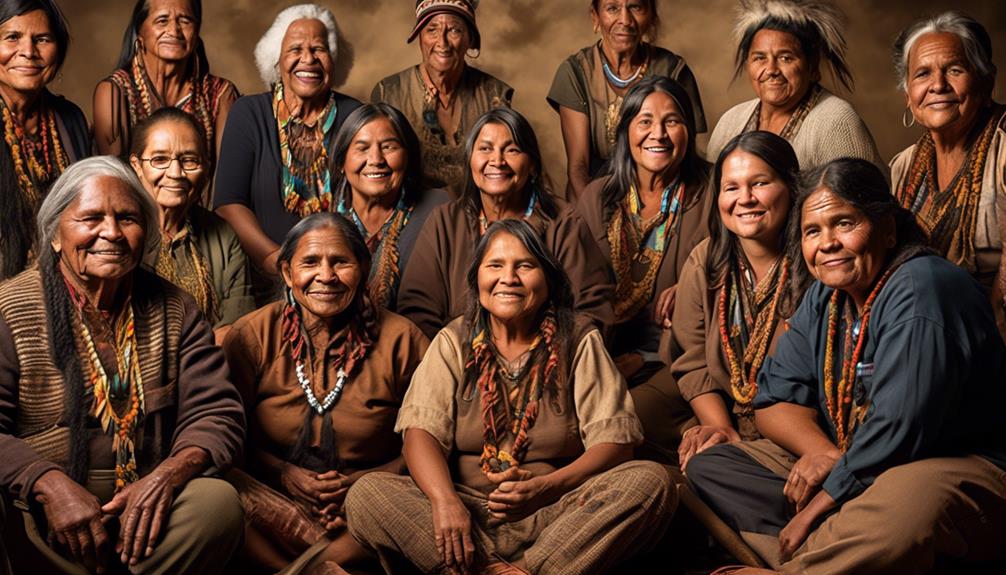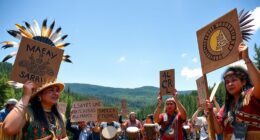Preserving Indigenous Australian languages through digital means is crucial to safeguarding their linguistic heritage. The urgency of this task cannot be overstated, as many unique languages are at risk of extinction.
However, the use of digital technologies has opened up new possibilities for preserving and revitalizing these linguistic treasures. From innovative methods of documentation to the involvement of Indigenous communities, digital archiving offers a promising path forward.
Let's explore how this new frontier is shaping the protection of Indigenous Australian linguistic heritage and the implications it holds for the future.
Key Takeaways
- Indigenous Australian languages preserve cultural heritage and transmit traditional knowledge.
- Intellectual property issues complicate preservation efforts, especially for Indigenous cultural property.
- Advanced technologies effectively capture and preserve Indigenous Australian linguistic heritage.
- Digital archiving has a profound impact on cultural revitalization.
The Importance of Indigenous Australian Languages
Indigenous Australian languages play a vital role in preserving cultural heritage and transmitting traditional knowledge across generations. These languages are deeply intertwined with the cultural identity of Indigenous communities and hold valuable insights into traditional practices, beliefs, and ways of life. As we navigate the digital age, it becomes increasingly important to safeguard these languages and the associated cultural materials. Digital media and technologies offer innovative opportunities to document and preserve Indigenous Australian linguistic heritage, ensuring that these languages aren't lost to the passage of time.
In the realm of Indigenous cultural heritage, the digital archiving of languages holds immense significance. It allows for the creation of digital repositories that can house linguistic resources, such as recordings, dictionaries, and educational materials. Moreover, digital platforms provide a means for wider dissemination of these resources, enabling the broader community to engage with and learn from Indigenous languages.
Challenges in Documenting Endangered Languages
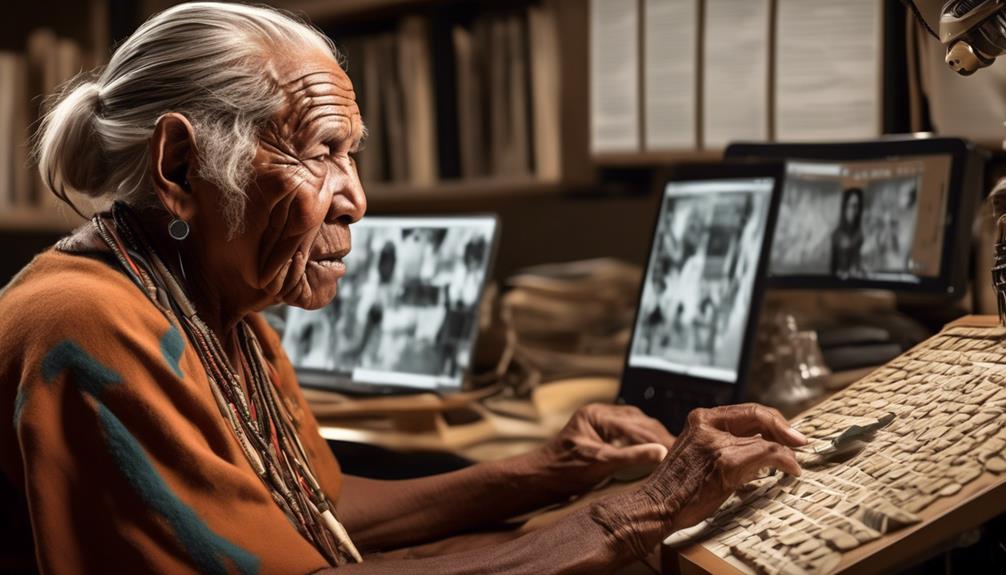
Amid the efforts to safeguard Indigenous Australian languages and cultural heritage in the digital age, we encounter significant challenges in documenting endangered languages. This task is essential for preserving Indigenous knowledge and cultural expressions for future generations. The complexities of intellectual property issues further complicate this endeavor, especially when it comes to Indigenous cultural property.
Indigenous Peoples face unique challenges in the globalization of laws and markets, which often don't adequately protect their traditional knowledge and culture.
The limitations of conventional law in safeguarding indigenous cultural and intellectual property, particularly in digital forms, pose significant obstacles.
The importance of cultural mapping and utilizing information technologies to capture and preserve endangered languages can't be overstated.
As we delve into this topic, it becomes evident that addressing these challenges requires a deep understanding of the intersection between traditional knowledge and digital democracy. It's imperative to navigate these complexities to ensure the successful documentation and preservation of endangered languages, thereby honoring Indigenous cultural heritage.
Digital Archiving Technologies and Tools
Utilizing advanced digital archiving technologies and tools, we can effectively capture and preserve Indigenous Australian linguistic heritage, ensuring its longevity and accessibility for future generations.
Digital archiving technologies, such as audio and video recording equipment, allow for the documentation of spoken language, cultural practices, and traditional knowledge. These tools enable the recording, reproduction, and promotion of cultural heritage, contributing to the protection of indigenous Australian linguistic heritage.
Additionally, digital archiving supports communal responses to the preservation of cultural property, fostering a sense of digital democracy and inclusivity in accessing and engaging with this valuable heritage.
In the digital realm, indigenous initiatives creatively respond to the digitization and electronic dissemination of cultural objects, knowledge, and landscapes. However, it's important to consider the limitations of conventional law in protecting indigenous cultural and intellectual property, especially in digital forms.
Digital archiving technologies play a crucial role in addressing these challenges, supporting language revitalization and the preservation of indigenous languages and cultural heritage. As we navigate this landscape, it's essential to respect intellectual property rights and work collaboratively with indigenous communities to ensure the ethical and responsible use of digital archiving technologies for the protection of their linguistic heritage.
Community Involvement in Linguistic Preservation
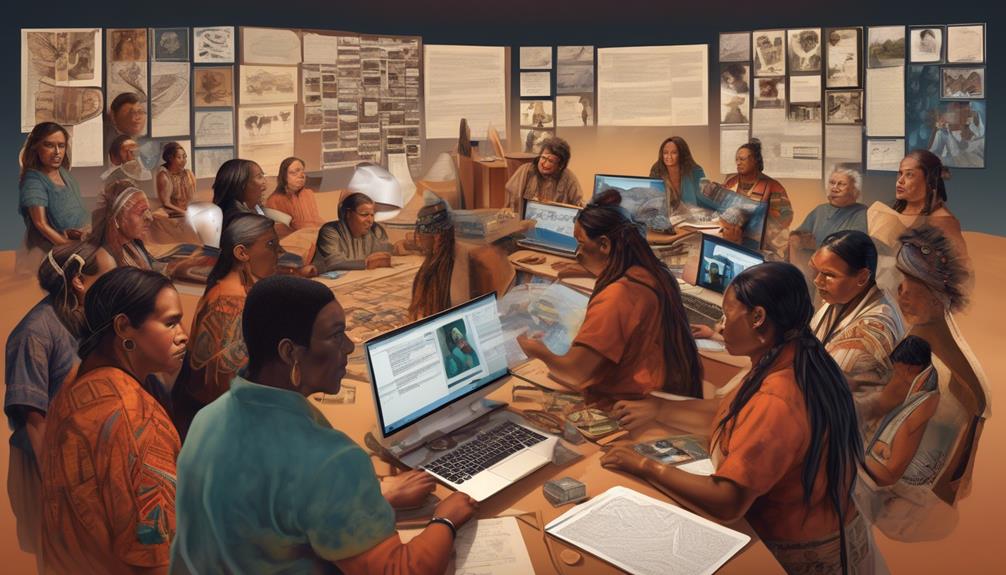
Community members actively participate in preserving and promoting their linguistic heritage through collaborative digital initiatives. This communal response is driven by a deep-seated commitment to safeguarding our cultural property and ensuring the continuity of our indigenous language for future generations. Through community involvement, we establish a sense of shared responsibility and collective ownership of our linguistic heritage, fostering a spirit of unity and togetherness. Our collaborative efforts not only contribute to the protection of indigenous linguistic heritage but also serve as a catalyst for cultural revitalization and empowerment within our community.
Embracing digital archiving technologies allows us to safeguard our linguistic heritage from the threats of erosion and loss, providing a platform for its preservation and promotion.
Our active involvement in linguistic preservation fosters a profound sense of pride and connection to our indigenous identity, nurturing a strong cultural legacy for generations to come.
Through community engagement in linguistic preservation, we uphold our commitment to protecting indigenous heritage and promoting linguistic diversity, embodying the spirit of communal stewardship.
Together, we stand at the forefront of this new frontier, leveraging digital archiving and community involvement to safeguard our linguistic heritage as a precious cultural asset for indigenous peoples in Australia.
Impact of Digital Archiving on Cultural Revitalization
In our ongoing commitment to preserving and promoting our indigenous linguistic heritage through digital archiving, we have witnessed the profound impact of these technologies on cultural revitalization. Digital archiving has played a pivotal role in the revitalization of Indigenous languages and cultural heritage. By leveraging new technologies, we have been able to protect and promote our linguistic heritage in ways that were not possible before. These initiatives have not only provided institutional protection for our linguistic heritage but have also fostered communal involvement in the preservation and promotion of our cultural identity. Through digital archiving, we have been able to engage with our communities, share knowledge, and ensure that our cultural heritage is passed on to future generations. The impact of digital archiving on cultural revitalization is evident in the way it has empowered Indigenous communities to reclaim, preserve, and celebrate their linguistic and cultural heritage.
| Digital Archiving | Impact | Cultural Revitalization | Protection |
|---|---|---|---|
| New technologies | Institutional protection | Communal involvement | Indigenous heritage |
Frequently Asked Questions
What Has the Australian Government Done to Preserve Aboriginal Languages?
We've been proactive in preserving Aboriginal languages through government initiatives, community collaborations, and educational programs.
We've allocated funding for language revitalization and cultural preservation, supporting the development of digital resources and technological advancements.
Our efforts include linguistic documentation, oral history preservation, and promoting indigenous knowledge.
We've worked closely with indigenous communities to establish language centers and create language learning apps, ensuring the preservation of Aboriginal languages for future generations.
What Is Mukurtu Cms?
Mukurtu CMS is a powerful platform that prioritizes protecting Indigenous Australian languages and cultural heritage. It offers robust features like digital preservation, access control, and user permissions.
This system allows for the inclusion of traditional knowledge and narratives in metadata, promoting linguistic diversity and community engagement.
With customization options, it ensures that Indigenous communities have the tools to manage and share their heritage in a way that respects their cultural protocols.
Conclusion
As we journey through the digital frontier, we must remember the precious treasures we carry with us – the languages, stories, and wisdom of Indigenous Australian communities.
Digital archiving is our compass, guiding us to preserve and protect these invaluable linguistic heritage.
Let's continue to chart this course together, honoring the past and shaping the future, so that these languages may thrive once more, like seeds planted in fertile soil, blossoming for generations to come.
Nayeli is our dedicated Editor in Chief, bringing her passion for words and keen editorial eye to every piece of content we produce. With years of experience in the field, she ensures that every article and publication meets the highest standards of quality and clarity. Nayeli’s commitment to storytelling and her deep understanding of our mission make her an invaluable leader in our team.
